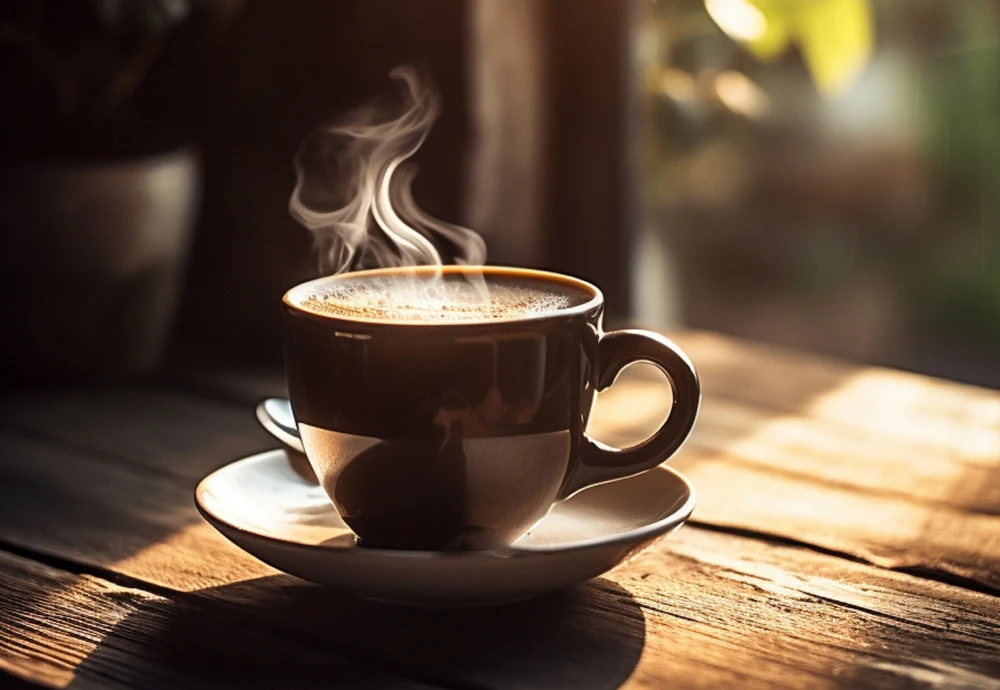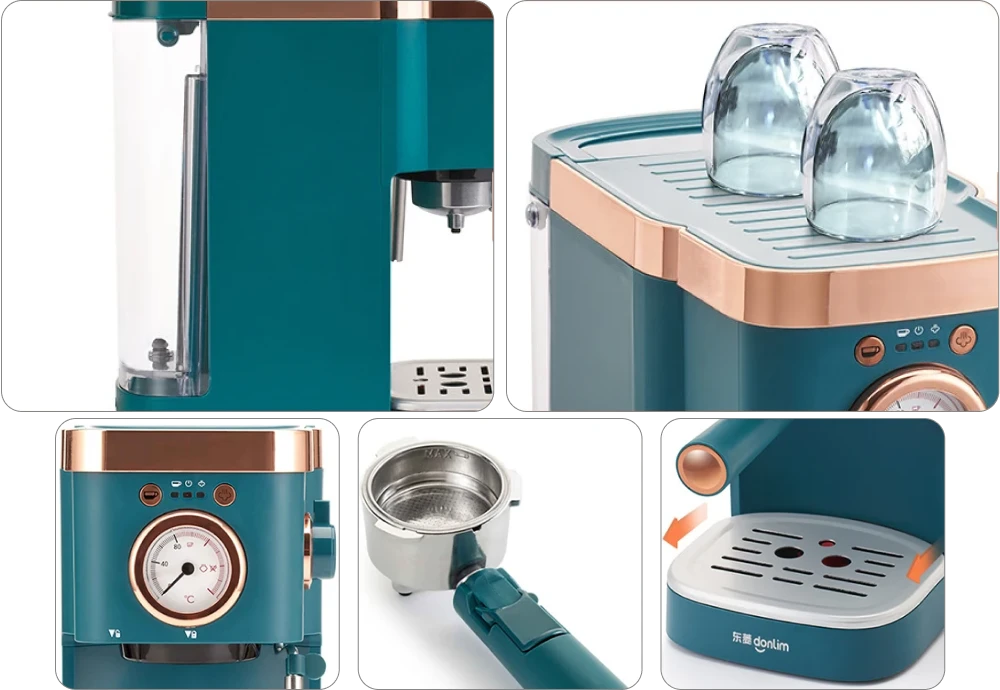Search

The aroma of freshly brewed espresso is something that many coffee lovers find hard to resist. But what if you don’t have access to a fancy, high-end espresso machine? In this guide we’ll explore how to make an espresso without an espresso machine – making your favorite beverage accessible anytime!

You might wonder why bother learning how to make your own brew when you can easily grab one from the nearest café. Well, brewing at home has its perks! It’s cost-effective, convenient, and allows you total control over your drink’s taste and strength.
The Deluxe Semi-Automatic Espresso Coffee Maker with Steam Milk Frother, although not necessary in our process of making espressos without a machine, gives us some ideas about what makes good coffee.

We’ve established why it’s beneficial; now let’s get into the details of how exactly do we go about creating our homemade masterpiece!
Start with high-quality, freshly roasted coffee beans. Grind them just before brewing to ensure maximum freshness and flavor. Aim for a coarse grind, especially if you are using a coffee press or French press, as this allows for better extraction and prevents over-extraction, which can lead to bitterness.
Use hot water that is just off the boil, ideally between 195°F and 205°F (90°C and 96°C). Water that is too hot can scorch the coffee grounds, while water that is too cool can result in under-extracted coffee with a flat taste. Pour the water slowly and evenly over the coffee grounds to ensure even saturation.
Add the freshly ground coffee to your coffee press or French press. The standard ratio is about 1 tablespoon of coffee per 4 ounces of water, but you can adjust this based on your taste preference. Pour the hot water over the coffee grounds and stir gently to mix. Place the lid on the press with the plunger pulled up, and let the coffee steep for about 4 minutes.
Patience is key to a perfect brew. Allow the coffee to steep for the full 4 minutes to ensure a rich, full-bodied flavor. After steeping, slowly press the plunger down with even pressure. Pour your freshly brewed coffee into a mug and enjoy.
By following these steps—using freshly ground beans, the right temperature water, a coffee press or French press, and allowing for proper steeping time—you can create a perfect homemade brew that rivals any café.
Now that we’ve covered the basics of how to make espresso without a machine, let’s delve into some tips and tricks. These will help you perfect your brewing technique for a coffee experience like no other.
Coffee enthusiasts are always looking for ways to elevate their home-brewing game. Let’s take a look at some of the latest trends making waves in the world of homemade coffee.
If you’re wondering about how different types of coffees would taste when brewed using our method, here is what you need to know!
The Deluxe Semi-Automatic Espresso Coffee Maker with Steam Milk Frother can also be used as inspiration while experimenting with various beans.
We hope this guide has armed you with all necessary knowledge on how to make an espresso without an espresso machine. Now it’s time for action – start brewing today!
There are numerous advantages to brewing your own coffee at home., it’s cost-effective; buying beans and brewing them yourself can save you a lot of money in the long run compared to buying ready-made drinks from cafes.
Secondly, there’s convenience – having the ability to make an espresso whenever you want without needing an espresso machine. Lastly, control is key. You have total authority over how strong or weak you’d like your drink to be.
Making espresso without an espresso machine involves careful attention and precision. It starts with choosing high-quality coffee beans. The fresher they are, the better tasting your brew will be.
You then need hot water that isn’t boiling – around 200 degrees Fahrenheit is ideal. A French press is also essential in this process as it helps extract flavourful oils from the ground beans effectively.
A French press isn’t just limited to making regular coffee; it can also produce rich and robust espressos! All you need is finely-ground coffee beans and hot water. Combine these two ingredients inside the press, wait for about four minutes before pressing down slowly on its plunger – et voila! Your homemade espresso sans a machine!
Beyond being able to make an espresso without an espresso machine, understanding different types of coffees can enhance your overall experience too. Arabica and Robusta are two of the most popular types, each offering unique flavors and characteristics.
Arabica beans are known for their sweet, fruity taste while Robusta has a strong, bold flavor. Experimenting with different beans can lead to discovering your personal favorite blend!
The world of coffee is ever-evolving; new trends constantly emerge as enthusiasts continue to innovate. Cold brews have been gaining popularity due to their smoothness and lower acidity compared to hot-brewed coffee.
Another trend that’s catching on is using alternative brewing methods such as Aeropress or Chemex – these offer a fun twist in making your daily cup!

With this comprehensive guide on how to make an espresso without an espresso machine, you’re now ready to embark on your home-brewing journey! Remember that practice makes perfect – don’t be disheartened if your first few attempts aren’t successful.
The Deluxe Semi-Automatic Espresso Coffee Maker with Steam Milk Frother serves as a great inspiration when it comes down to achieving high-quality results at home.
Keep experimenting with different techniques and recipes until you find one that suits your taste perfectly – happy brewing!
Leave a comment